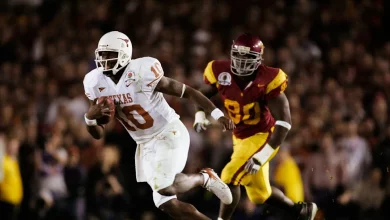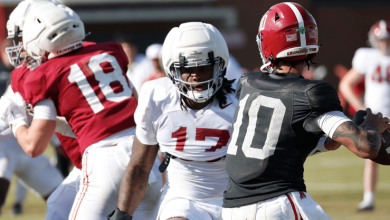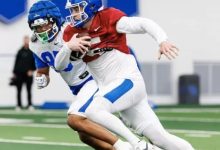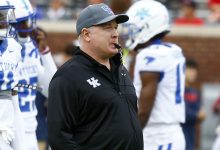John Klingberg might be benched as the Edmonton Oilers consider making a drastic lineup change in their quest for the Stanley Cup.
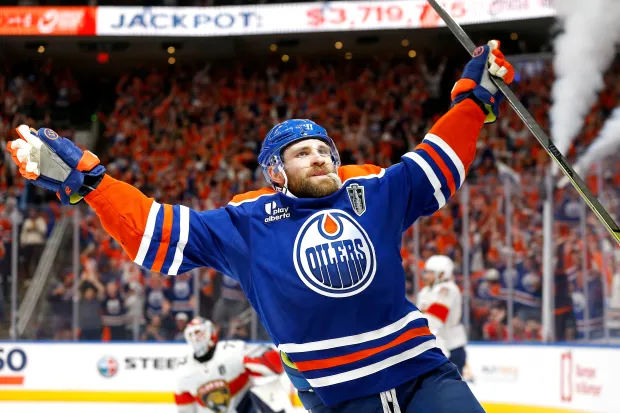
As the Edmonton Oilers march deeper into their most promising Stanley Cup campaign in nearly two decades, the spotlight has shifted away from the high-flying stars like Connor McDavid and Leon Draisaitl—and onto the quieter, more subtle battles playing out behind the scenes. One of the most pressing storylines is centered on veteran defenseman John Klingberg, whose place in the lineup is now under scrutiny.
The prospect of benching Klingberg—a player once considered among the league’s premier offensive defensemen—is both controversial and consequential. But as the Oilers enter the most unforgiving stretch of playoff hockey, the coaching staff appears poised to make a drastic move in hopes of tightening defensive vulnerabilities and increasing their chances of hoisting the Cup.
Klingberg’s Rocky Road to Edmonton
When the Oilers signed John Klingberg midway through the 2024–25 season, it was viewed as a low-risk, high-reward gamble. The 31-year-old Swedish defenseman was returning from a significant hip resurfacing procedure, an operation known to end careers just as easily as it prolongs them.
Klingberg had inked a one-year, $1 million “prove-it” deal with the team—a stark contrast to the big-money contracts he once commanded as a top-four defenseman with the Dallas Stars. Having missed nearly a full calendar year of hockey, he arrived in Edmonton with more question marks than accolades. Could he still move the puck efficiently? Would his skating survive the demands of playoff hockey? Was he a solution or a liability?
Initially, the signs were encouraging. Klingberg showed flashes of the creativity and poise that made him such a force in Dallas. His ability to quarterback the power play gave Edmonton a secondary option behind Evan Bouchard, and his passing remained elite. But while his offensive instincts remained intact, the defensive deficiencies in his game—exacerbated by rust and reduced mobility—became harder to ignore.
The Numbers Don’t Lie
By the end of the regular season, Klingberg had posted a modest 12 points in 28 games, with a minus-6 rating and an average ice time of 16:41 per game—the lowest of his career. While point totals only tell part of the story, deeper analytics painted a worrying picture.
According to Natural Stat Trick, Klingberg’s expected goals against per 60 minutes (xGA/60) was the highest among Edmonton’s defensemen. His defensive zone turnover rate also ranked near the bottom on the team. Simply put, the Oilers bled chances whenever Klingberg was on the ice in even-strength situations.
“He still has the hands, but the legs just aren’t there anymore,” said a Western Conference scout who requested anonymity. “You can see his mind trying to make plays, but the execution is a half-second behind.”
Head coach Kris Knoblauch remained diplomatic when asked about Klingberg’s role during early playoff rounds. “John is a pro. He knows what it takes to compete in the postseason,” Knoblauch said. “There are always internal discussions about lineup changes, but nothing’s decided until game time.”
The Turning Point: Game 4 vs. Colorado
The Oilers’ second-round series against the Colorado Avalanche served as a microcosm of both Klingberg’s strengths and his fatal flaws. In Game 2, he notched a crucial assist on a McDavid power-play goal with a perfectly threaded pass through the seam. But in Game 4, a defensive-zone miscue led directly to an Avalanche goal that shifted momentum and ultimately cost Edmonton the game.
In the postgame presser, Knoblauch was visibly frustrated.
“We can’t gift goals in the playoffs,” he said. “It’s not about pointing fingers, but everyone has to be accountable.”
That comment, though not explicitly directed at Klingberg, echoed throughout Oil Country. Suddenly, the conversation among fans and analysts shifted: was it time to sit Klingberg?
Dressing for Depth: The Case for Benching Klingberg
With the Oilers boasting a surprisingly deep defensive corps this year—including the emergence of Vincent Desharnais, Philip Broberg, and the ever-reliable Brett Kulak—the coaching staff has options. Even journeyman Troy Stecher has impressed in limited minutes with a more physical, shutdown-focused style of play.
“Stecher gives you bite. Broberg gives you speed. Kulak is your glue guy,” said Sportsnet analyst Kevin Bieksa during a recent panel discussion. “Klingberg? He gives you offense, but that’s about it—and they already have that with Bouchard.”
The question becomes: does the upside Klingberg brings on the power play justify the defensive liability at five-on-five? Increasingly, the answer may be no. Edmonton’s power play has remained dominant (clicking at over 30%), but its success isn’t necessarily tied to Klingberg’s presence.
Moreover, the Oilers’ path to the Cup now goes through teams that punish mistakes—Dallas, Florida, or the New York Rangers all possess the speed and forecheck to exploit a struggling defender. Klingberg’s weaknesses would be magnified.
Locker Room Dynamics and Veteran Leadership
Benching a player like Klingberg isn’t merely a tactical decision—it’s also a test of locker room chemistry and leadership. Known for his calm demeanor and professionalism, Klingberg has not voiced frustration publicly. Teammates have spoken highly of his mentorship behind the scenes.
“Johnny’s a great guy in the room,” said Leon Draisaitl. “He’s been through deep playoff runs before. He brings that experience and calmness.”
That may be true, but playoff lineups are unforgiving. Experience counts, but so does execution.
A Legacy in the Balance
For Klingberg, the next few games could determine whether his NHL career finds redemption or further decline. A healthy scratch at this stage of his career, following hip surgery and a one-year deal, might signal the beginning of the end. Conversely, a strong bounce-back performance—if given another chance—could write an entirely different narrative.
“Klingberg is the kind of player who can still change a game,” said TSN’s Craig Button. “But can he do it consistently enough? That’s the gamble.”
And that’s what makes this decision so tough. The Oilers are on the cusp of something extraordinary—a Stanley Cup Final appearance is within reach. Every lineup change is a chess move. One wrong decision could unravel months of progress.
What Comes Next?
As Edmonton prepares for Game 5 against the Avalanche, all eyes are on the morning skate. Klingberg’s absence from line rushes would be telling. Knoblauch has kept his cards close, rotating Broberg and Stecher into practice pairings.
When asked if Klingberg would be in the lineup, Knoblauch gave a measured response.
“We’ll do what gives us the best chance to win. That’s all I’ll say.”
It’s a quiet, almost anticlimactic answer—but it carries weight. For Klingberg, for the Oilers, and for a fan base desperate for a Cup, it might be the difference between glory and heartbreak.
John Klingberg’s journey to this point has been anything but linear. Once an elite blueliner, now battling through injury recovery and diminished speed, he finds himself at a crossroads. In a different context, he might be celebrated for his perseverance and hockey IQ. But in the brutal world of NHL playoff hockey, sentiment often yields to necessity.
The Edmonton Oilers, in the best position they’ve been since 2006, must now make a decision. Klingberg’s fate—whether in the press box or back on the blue line—could be a footnote, or it could be a headline. Either way, it’s a storyline that underscores the high-stakes drama of the Stanley Cup Playoffs.
And in this crucible of pressure, there are no easy choices—only the hope that the next one is the right one.




